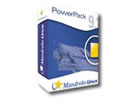'ZDNET Recommends': What exactly does it mean?
ZDNET's recommendations are based on many hours of testing, research, and comparison shopping. We gather data from the best available sources, including vendor and retailer listings as well as other relevant and independent reviews sites. And we pore over customer reviews to find out what matters to real people who already own and use the products and services we’re assessing.
When you click through from our site to a retailer and buy a product or service, we may earn affiliate commissions. This helps support our work, but does not affect what we cover or how, and it does not affect the price you pay. Neither ZDNET nor the author are compensated for these independent reviews. Indeed, we follow strict guidelines that ensure our editorial content is never influenced by advertisers.
ZDNET's editorial team writes on behalf of you, our reader. Our goal is to deliver the most accurate information and the most knowledgeable advice possible in order to help you make smarter buying decisions on tech gear and a wide array of products and services. Our editors thoroughly review and fact-check every article to ensure that our content meets the highest standards. If we have made an error or published misleading information, we will correct or clarify the article. If you see inaccuracies in our content, please report the mistake via this form.
Mandrake Linux PowerPack Edition 9.1


Mandrake Linux PowerPack Edition 9.1
pros and cons
- Easy to install automatically configures and resizes NTFS drives provides strong support for both KDE and GNOME graphical user interfaces excellent font readability and controls.
- Slightly unintuitive interface no tech support for free version no free phone support.
With version 9.1 of its Linux distribution, MandrakeSoft has come as close as anyone to making Linux truly competitive with Windows. How? Mandrake Linux 9.1's relatively easy installation process isn't the reason -- after all, easy graphical installs have become the norm for recent Linux distributions, such as Red Hat Linux 8.0 and SuSE Linux 8.1. Believe it or not, Mandrake's fonts make all the difference. Mandrake offers fully readable word processing documents, spreadsheets and Web pages, as well as granular font control. It's also brimming with bundled aplpications and can now automatically partition a Windows NTFS drive -- something Red Hat and SuSE can't do. Mandrake Linux 9.1 doesn't resoundingly trump Red Hat or SuSE, but if you're looking for easy reading and support for NTFS partitioning, give this one a try.
Setup & interface
Not long ago, Linux installations brought fear and trepidation to the uninitiated, but thankfully that's no longer the case. Mandrake Linux 9.1 provides a graphical installation process and throws out only a few stumbling blocks. For example, the setup asks for a username or an email address of a security administrator, but doesn't explain what the request is for -- most users can safely ignore it. Overall, setup runs smoothly, and although the help text is not as extensive as Red Hat's, installation is more suited to Linux newbies, thanks to the series of relatively simple wizards.
The same easy setup applies to the partitioning process, too. Like SuSE 8.1, Mandrake 9.1 offers an automatic partitioning option that makes use of free space on your hard drive to install the necessary Linux partitions and carry on with the installation. You can also use the built-in partitioning utility to manually choose the size of your partition, or you can tell Mandrake to get rid of all existing operating systems (which wipes out Windows and anything else) and take over the whole system. The default is automatic partitioning, which worked smoothly in our tests.
Mandrake ships with all the standard Linux desktop environments (KDE, GNOME, ICEwm, Enlightenment, WindowMaker and so on), installing both KDE 3.1 (with some slightly more useful icon groupings) and GNOME 2.2 by default -- a nice touch. You can then easily switch from one to the other, and if you choose to install any other window managers, you can select them at login. Mandrake 9.1 runs all of its desktop environments atop XFree86 4.3.0, the most recent version available of Linux's common X Window GUI system.
Once you have this OS up and running, you'll immediately notice its highly readable fonts. Although the screen display still doesn't come close to a Windows XP screen with the ClearType font smoothing option turned on, especially on notebooks, Mandrake has given us the first truly readable Linux fonts out of the box. If they aren't pretty enough by default, you can also control the anti-aliasing of your system's fonts to improve things even more.
Mandrake's help screens work well, but novices will still have trouble navigating the OS. For example, you must look inside the /mnt directory to examine your Windows drives in the file manager (Konquerer in the case of KDE, Nautilus in the case of GNOME), which is not easy to figure out; it's also hard to know where to look in order to launch newly installed programs. But the same could be said for any unfamiliar OS, and this is really a KDE and GNOME issue, not specifically a Mandrake one.
Features
In the world of Linux distributions, the word ‘features’ means primarily two things: the configuration dialogues (preference menus that let you customise everything from your desktop environment to peripherals), and the range and number of included applications. In both regards, Mandrake 9.1 stacks up well against its competition. Mandrake 9.1 offers several configuration screens to choose from, including KDE's and GNOME's standard dialogues and another one specific to Mandrake. Mandrake 9.1 offers strong support for multiple desktops, as well as plenty of configuration options for networks and peripherals.
Mandrake also ships with several groups of applications (called ‘packages’ in Linux-speak). During setup or anytime later, you can install a host of games, utilities, applications and servers. The Standard Edition includes the latest Apache Web server, as well as GNOME's well-regarded (and very Outlook-like) Ximian Evolution. The entire installation fits into a few gigabytes of space, so we recommend installing all the applications if you have room. The PowerPack Edition includes Sun's StarOffice 6.0 productivity suite, in addition to the two suites packaged with the Standard Edition, OpenOffice and KOffice. In fact, PowerPack includes two CDs filled with commercial applications, plus another with more applications, none of which are part of the Standard Edition package. The PowerPack Edition includes two printed user guides, two months of free technical support (instead of one), and unlimited security updates for one computer.
New to 9.1 (which runs Linux kernel 2.4.20 with the 2.4.21 patch) are a couple of important underlying features and one purely aesthetic one. The latter is Mandrake's Galaxy desktop theme, which you can use or replace with a different theme as you wish, but which has the advantage of providing a unified look to both the KDE and GNOME desktops, so it's not too jarring to switch between them. More importantly, you'll find an automatic network-configuration tool, called zeroconf, which helps you configure Ethernet, DSL and cable connections. Version 9.1 also includes the ability to resize NTFS partitions. Whereas many other Linux distributions, including SuSE 8.1, can't automatically partition a Windows NTFS drive during setup, Mandrake 9.1 now allows direct manipulation and auto-partitioning of NTFS drives (although, as with any partitioning package, it's still a good idea to back up everything you can before working with disk partitions).
Service & support
Technical support for Mandrake 9.1 comes in different forms for different editions. If you download the distribution, you don't get any support. If you buy the Standard Edition, you're entitled to 30 days of Web-only installation support via email (Mandrake guarantees a response within 48 hours and follows through). Purchasers of the PowerPack Edition get 60 days of this installation support, plus a security update license for one computer. There's no free phone support, however. By comparison, Red Hat Linux 8.0 Professional includes no phone support whatsoever but has similar online offerings boosted by 30 days' access to premium downloads and automatic OS updates. SuSE Linux 8.1 has the best support of the three, with free installation support by email, fax or phone for 90 days.